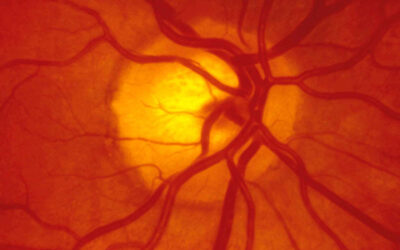Optical Coherence Tomography: What Is It?
Simply put, OCT is a type of specialised scan that assists optometrists in assessing the health of your eyes by allowing them to see the internal structures.
OCT scans go one step further than standard 2D retinal photographs, using light waves to create intricately detailed, high-resolution 3D images of all layers and structures within your eye by taking cross-section pictures.
The level of detailed imaging that OCT scans provide allows your eye care professionals to assess important aspects of your eyes, including your vitreous humour (the jelly-like substance that fills your eyeball), your retina (the light-sensitive layer at the back of your eye), the macula (an area at the centre of your retina responsible for central vision) and the optic nerve (a nerve that sends signals from your eye to the brain to produce the images we see)
These scans enable the optometrist to detect even subtle changes that can be indicative of early-stage diseases or other issues, potentially in a way that no other test can. Furthermore, it is a means of record keeping and comparison of data for future exams.
An OCT is a way to look at the structures, tissues, and nerves function within the body in a completely non-invasive manner that is not possible with any other organ. In some cases, systemic conditions can be diagnosed early with this technique.
Some of the conditions an OCT scans might detect:
OCT scans can help to identify:
• Diabetic retinopathy
• Retinal detachment
• Age-related macular degeneration
• Macular holes
• Glaucoma (up to four years earlier than traditional methods)
• Macular swelling or creases/bulges (known as macular ‘pucker’)
• Vitreous traction
• Blood vessel abnormalities, including blockages
• Changes to the optic nerve
Outside of the field of optometry, these scans have also been shown to be a useful diagnostic tool in diagnosing early-stage skin cancers, among other conditions and areas of the body, including imaging the vessels of the heart, other skin conditions, dental tissues, the gastrointestinal tract, and the nerves when evaluating the central nervous system.
The OCT Scan Process
The OCT scan process is straightforward, being completely non-invasive and painless. The scanning technology uses low-power infrared laser light and will measure the light that reflects off your retina and optic nerve without radiation or X-rays. The process takes just minutes, with the results appearing instantly in digital format.
When Should I Have An OCT Scan – Can I Book In For It Directly?
The OCT is a test that may incur an extra cost. At the time of having a full eye exam, the optometrist will discuss this. It is advisable to have this done, as it allows the complete and detailed record of the eye status saved for future comparison.
Of course, early detection and intervention is the goal of saving sight.
You can book your Optical Coherence Tomography scan as part of your regular eye test by contacting an Optical Co clinic near you.





